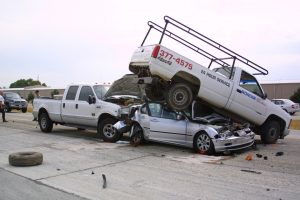 Millions of workers drive or ride in a motor vehicle as part of their jobs. And, motor vehicle crashes are the leading cause of work-related deaths in the U.S. The type of company or job doesn’t matter — the risk is there.
Millions of workers drive or ride in a motor vehicle as part of their jobs. And, motor vehicle crashes are the leading cause of work-related deaths in the U.S. The type of company or job doesn’t matter — the risk is there.
Tag: safety on the road
Fleet Safety is Good Business
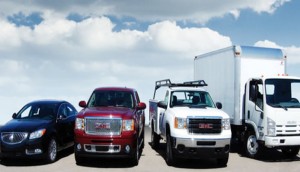 There is a clear link between a well-managed vehicle fleet and profitability. With more than 90 percent of crashes caused by human error (per the National Safety Council or NSC) creating a Fleet Safety plan will help your bottom line! A documented Fleet Safety plan pays off in multiple fashions – tangible benefits are a reduction of vehicle maintenance, downtime, and increased fuel efficiency. Intangible advantages could be increase in employee satisfaction, owner’s peace of mind with a documented process to follow.
There is a clear link between a well-managed vehicle fleet and profitability. With more than 90 percent of crashes caused by human error (per the National Safety Council or NSC) creating a Fleet Safety plan will help your bottom line! A documented Fleet Safety plan pays off in multiple fashions – tangible benefits are a reduction of vehicle maintenance, downtime, and increased fuel efficiency. Intangible advantages could be increase in employee satisfaction, owner’s peace of mind with a documented process to follow.
Passenger Without Seatbelt a Risk to Others in the Car
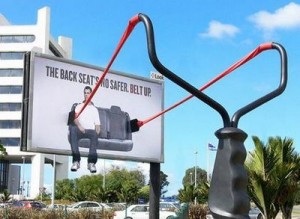 In a study, published in the Jan. 21 issue of The Journal of the American Medical Association, researchers looked at the association between the death of a car occupant and the use of restraints, either a seat belt or child car set, of another occupant in the same car based on fatal accident data from the National Highway Traffic Safety Administration.
In a study, published in the Jan. 21 issue of The Journal of the American Medical Association, researchers looked at the association between the death of a car occupant and the use of restraints, either a seat belt or child car set, of another occupant in the same car based on fatal accident data from the National Highway Traffic Safety Administration.
The found the risk of death was higher for the other occupants of the car if someone else was unrestrained, no matter where they were sitting. For example:
- For someone in the front seat wearing a seatbelt, the risk of death rose by 20% if someone behind them was unrestrained.
- For a restrained passenger in the rear seat, the risk of death increased by 22% if someone in front of them was unrestrained.
- For someone with a seatbelt on one side of the car, the risk of death rose by 15% if someone in the same seat row was unrestrained.
Based on those findings, researchers say that use of a seatbelt among rear-seat occupants could prevent about one in six deaths of front-seat passengers caused by car crashes.
Seat Belts: Why You Should Use Them
Staying Alive After an Auto Accident
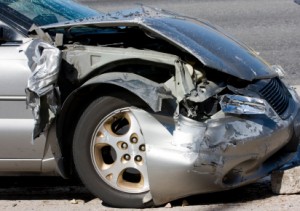 If your car will move, get it out of the flow of traffic and as far from traffic on the shoulder as possible. Turn on your flashers and stay inside the vehicle.
If your car will move, get it out of the flow of traffic and as far from traffic on the shoulder as possible. Turn on your flashers and stay inside the vehicle.- Keep your seatbelt on in case your vehicle is struck.
- Call 911. Get the other driver to pull off to a safe place so you can exchange information when help arrives.
- If you smell gas, get out. There could be a leak and risk of fuel-fed fire. If you have the engine running to stay warm in extremely frigid temperatures, be aware that the accident may have caused an exhaust leak putting you at risk for carbon monoxide poisoning, and you may not smell the exhaust coming in.
- If you must wait outside the vehicle, because you cannot get it out of traffic or you smell gas, get as far from the road as possible. Never stand behind or in front of the vehicle.
via 5 Tips for Staying Alive After an Auto Accident – AccidentAttorneys.org.
The Dangers of Texting While Driving
 The popularity of mobile devices has had some unintended and even dangerous consequences. We now know that mobile communications are linked to a significant increase in distracted driving, resulting in injury and loss of life.
The popularity of mobile devices has had some unintended and even dangerous consequences. We now know that mobile communications are linked to a significant increase in distracted driving, resulting in injury and loss of life.
The National Highway Traffic Safety Administration reported that in 2012 driver distraction was the cause of 18 percent of all fatal crashes – with 3,328 people killed – and crashes resulting in an injury – with 421,000 people wounded.
Forty percent of all American teens say they have been in a car when the driver used a cell phone in a way that put people in danger, according to a Pew survey.
The Virginia Tech Transportation Institute found that text messaging creates a crash risk 23 times worse than driving while not distracted.
Eleven percent of drivers aged 18 to 20 who were involved in an automobile accident and survived admitted they were sending or receiving texts when they crashed.
Distracted driving endangers life and property and the current levels of injury and loss are unacceptable.
Myths and Facts About Seat Belts
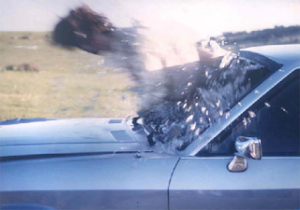 MYTH: I’d rather be thrown clear in a crash.
MYTH: I’d rather be thrown clear in a crash.
FACT: Being thrown safely clear in a crash is almost impossible. When you’re thrown, you may be thrown through the windshield, scraped along the pavement, or even crushed by your own vehicle or another one. The idea of being thrown from a car and gently landing in a grassy area beside the road is pure fantasy. Your best bet in a crash is to stay inside the vehicle, securely held by your seat belt.
Road Rage Can Be Deadly
 Road rage is aggressive or angry behavior by a driver of an automobile or other road vehicle. Such behavior might include rude gestures, verbal insults, deliberately driving in an unsafe or threatening manner, or making threats. Road rage can lead to altercations, assaults, and collisions that result in injuries and even deaths. It can be thought of as an extreme case of aggressive driving.
Road rage is aggressive or angry behavior by a driver of an automobile or other road vehicle. Such behavior might include rude gestures, verbal insults, deliberately driving in an unsafe or threatening manner, or making threats. Road rage can lead to altercations, assaults, and collisions that result in injuries and even deaths. It can be thought of as an extreme case of aggressive driving.
Motor Vehicle Safety
![]() Motor vehicle-related incidents are consistently the leading cause of work-related fatalities in the United States. Thirty-six percent of occupational fatalities reported by the Bureau of Labor Statistics are associated with motor vehicles. Between 2003-2010, on average:
Motor vehicle-related incidents are consistently the leading cause of work-related fatalities in the United States. Thirty-six percent of occupational fatalities reported by the Bureau of Labor Statistics are associated with motor vehicles. Between 2003-2010, on average:
- 1,275 workers died each year from crashes on public highways
- 311 workers died each year in crashes that occurred off the highway or on industrial premises.
- 338 pedestrian workers died each year as a result of being struck by a motor vehicle.
Source: U.S. Department of Labor, Bureau of Labor Statistics
via CDC – Motor Vehicle Safety – NIOSH Workplace Safety and Health Topic.
Motor Vehicle Injuries
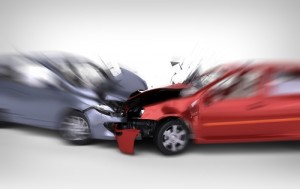 Motor vehicle-related injuries are a leading cause of death for people in the United States. Worldwide, road traffic crashes are the leading cause of death for people between the ages of 15 and 29. CDC is using science to better understand this problem and develop programs and policies that will change behavior to keep drivers, passengers, bicyclists, and pedestrians safe on the road every day.
Motor vehicle-related injuries are a leading cause of death for people in the United States. Worldwide, road traffic crashes are the leading cause of death for people between the ages of 15 and 29. CDC is using science to better understand this problem and develop programs and policies that will change behavior to keep drivers, passengers, bicyclists, and pedestrians safe on the road every day.

